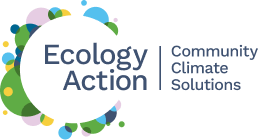As we shared last month in “Do Local Climate Action Plans Lead the Nation?”, the Monterey Bay Area is ahead of the curve in planning for climate action. A diversity of communities across the region agree that we need to act now to prevent the worst impacts of climate change. Many plans have a new focus on how to generate economic and social well-being through those actions. There are ten Climate Action Plans (CAPs) completed or in progress around the region, ranging from the Cities of Gonzales and Hollister to Carmel-by-the Sea. Here are a few highlights.
The City of Watsonville is an inspiring example of an accelerated focus on climate amidst other challenges. With many farmworker residents, the City of Watsonville has long focused on social equity issues. Seeing the accelerating impacts of fire, flood, and extreme heat on their residents, they have in the past several years rapidly developed and adopted equity-centered climate action policies, including a Climate Action and Adaptation Plan with a science-based target to achieve 80% reductions from 1990 levels and net negative emissions by 2030, which aligns with their endorsement of the Climate Safe CA platform. For each action area, the plan assesses co-benefits such as job creation, cost savings, and health advantages. Based on all of this, their top priority will be driving building electrification, and they are actively developing funding and financing to make this possible for their lower-income residents. They have also issued a Climate Emergency declaration. We encourage you to check out their plan and find ways to work with them to achieve their visionary targets.
The City of Salinas is leading an innovative Visión Salinas 2040 comprehensive planning initiative that includes the City’s General Plan Update and its first ever Climate Action Plan (CAP) combined. The City recently released its draft Greenhouse Gas Emissions inventory and held its first CAP workshop. Climate action, environmental justice, and social equity are crucial lenses for the Visión Salinas 2040 planning work and for creating a thriving future for all in Salinas. Community members who want to get involved can check the project website for upcoming in-person and digital engagement opportunities such as the Built Environment, Natural Systems, and unique Socioeconomic Systems Working Group meetings in May. The City is still in its first phase of engagement for both the General Plan and CAP, but it anticipates creating draft documents in early 2023 for adoption by the end of that year.
In 2020, Monterey County re-initiated their Sustainability Program after several years of dormancy. The Program is grounded in the three pillars of sustainability and is designed to support a healthy and vibrant economic, social, and environmental future for the residents of Monterey County. Wasting no time, they jumped right into developing the County’s first Community Climate Action and Adaptation Plan (CCAAP), planned for adoption in Fall 2022. Focusing on the unincorporated areas of the County, the agency has a broad diversity of both stakeholders and emission sources to plan for.
A unique facet of Monterey County’s plan is addressing rural sources. Like our local cities, transportation and building energy use are two of the highest emission sources. What’s markedly different is that agriculture is the largest source in the County’s greenhouse gas inventory at 33% of County emissions, and their non-residential buildings emit over double what their residential buildings do. While the hospitality and agricultural activities driving those numbers feed and host the whole world, the County plan will tackle reducing those emissions locally.
An exciting opportunity is that those same County agricultural lands also provide an upside to the County that cities don’t have: the opportunity for soil-based carbon sequestration. Monterey County’s CCAAP will start to assess the magnitude and nature of how much carbon is currently held in local soils and evaluate potential future carbon sequestration opportunities from agricultural and natural lands. We highly recommend you to visit their Climate Action Planning 101 learning space via their Frequently Asked Questions document, which helps everyone understand the why, how, and what of climate action planning. You can visit the County’s CCAAP site to learn more and sign up for updates.
Ecology Action is relieved and inspired to see climate action planning taking off with our longstanding public agency partners across the region. As citizens, it’s time to do our part to realize the vision our local agencies have worked hard to plan for us. We can get right to work, right now to reduce our own emissions. We can also increase our civic engagement to drive local agencies to plan for climate change (does your City have a climate action and adaptation plan?) and then support them to fund and implement those plans together with us as community partners.
In the words of Vince Lombardi, “Individual commitment to a group effort – that is what makes a team work, a company work, a society work, a civilization work.” We look forward to working with you to create our community’s climate-thriving future that works for everyone.




